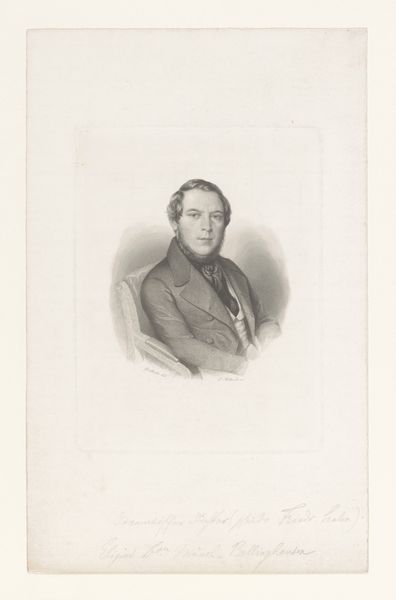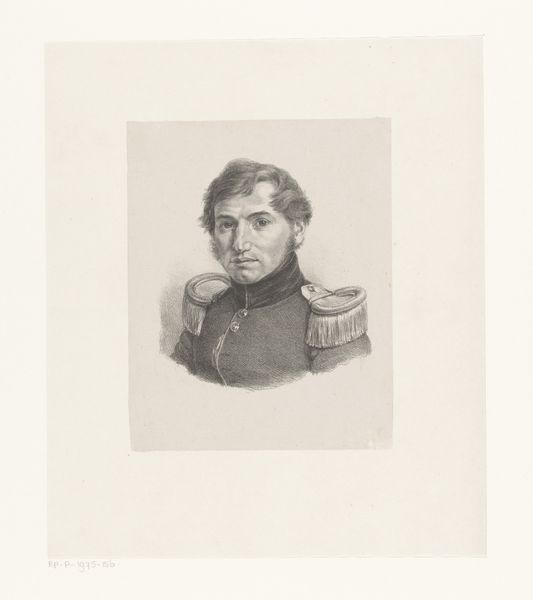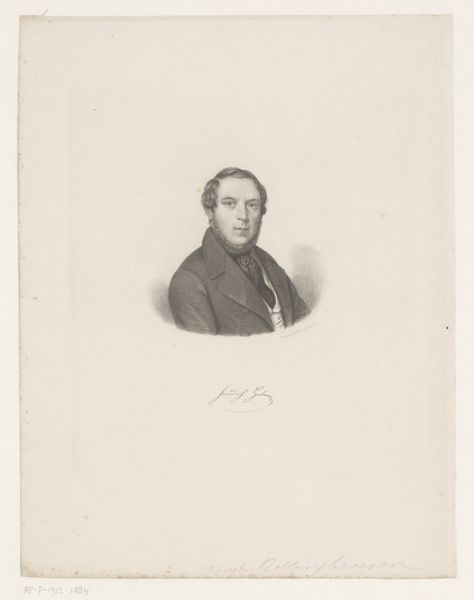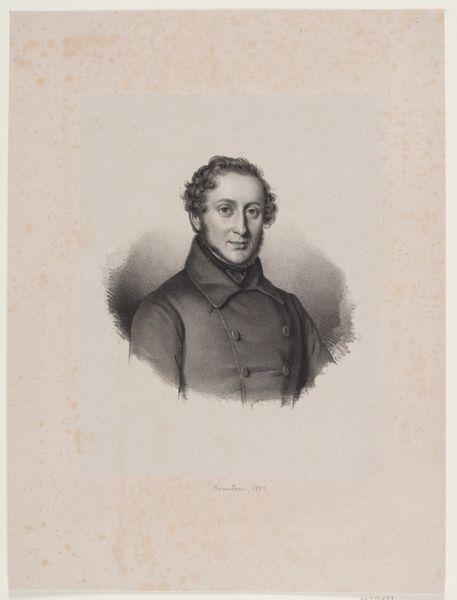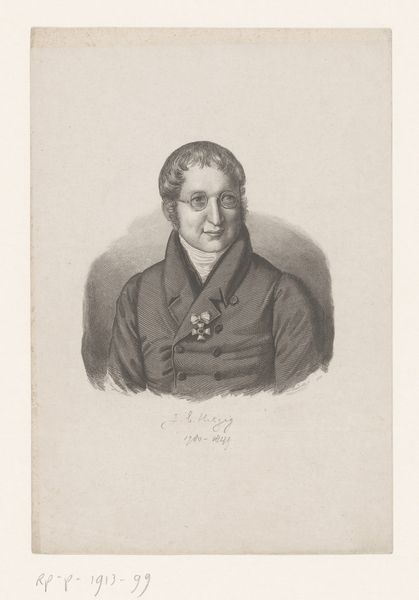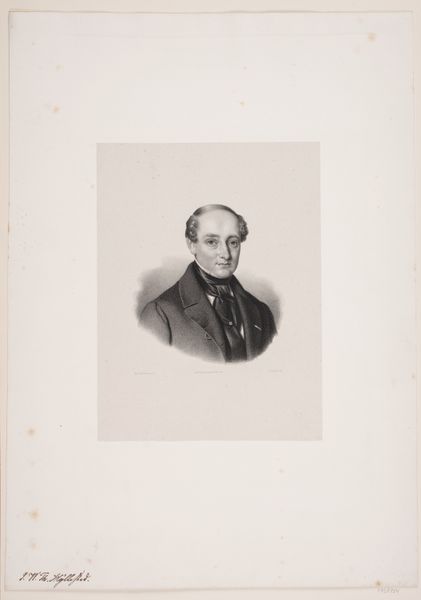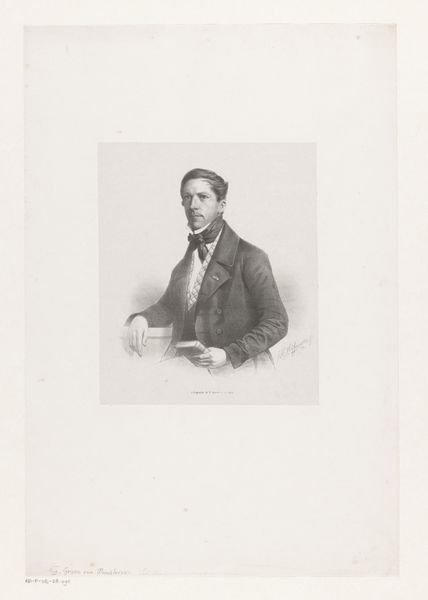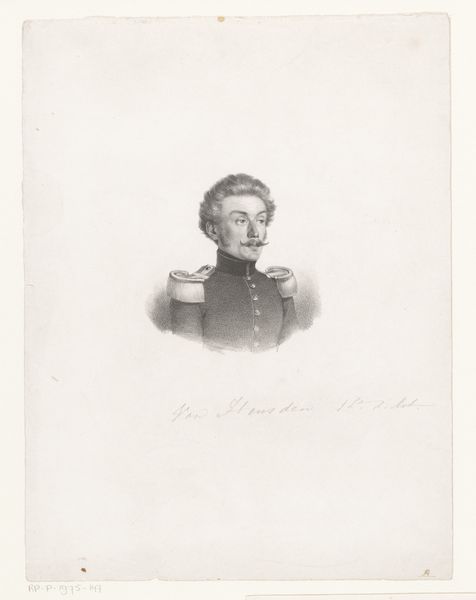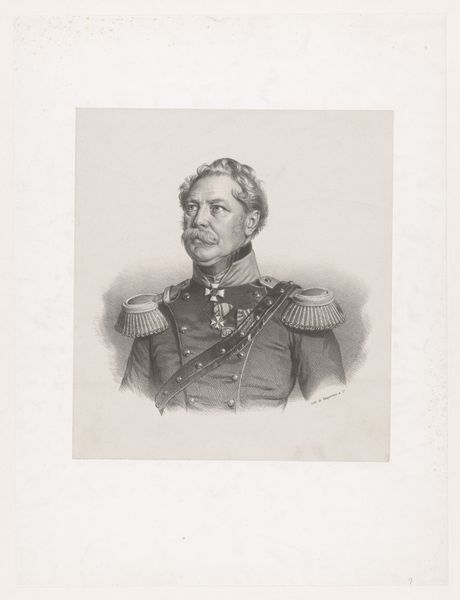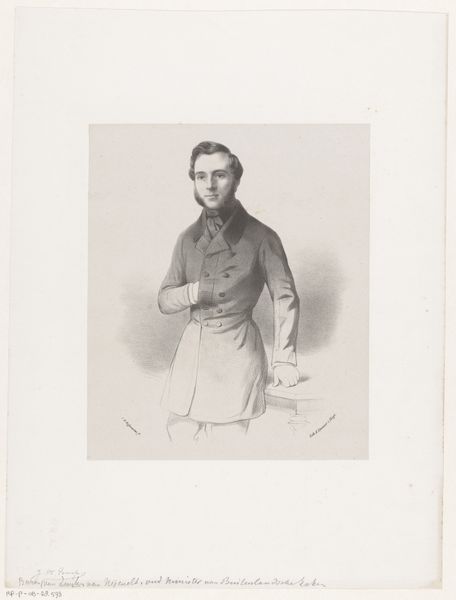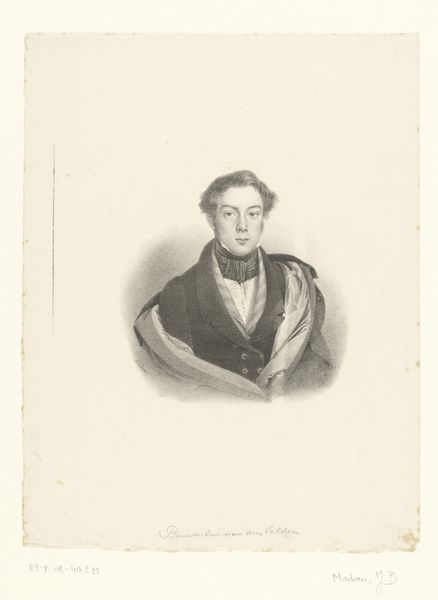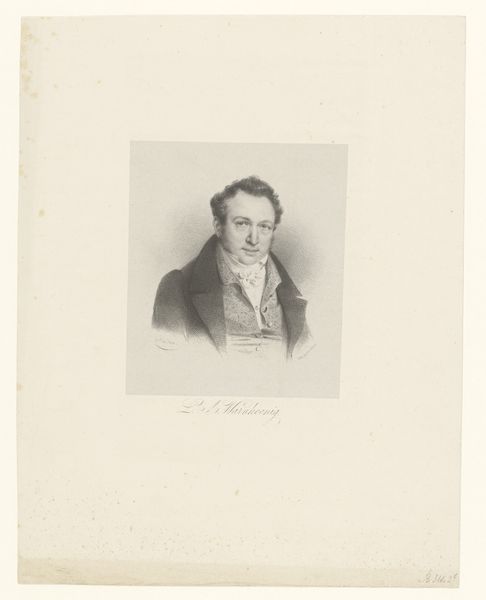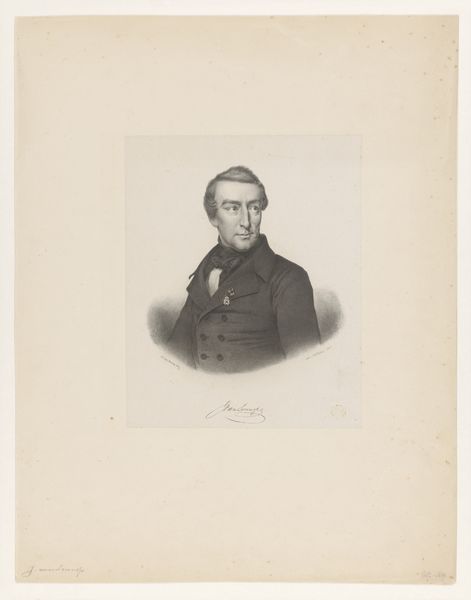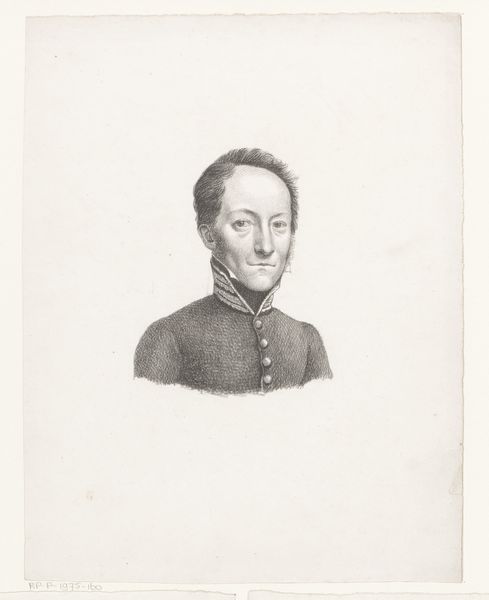
drawing, pencil
#
portrait
#
drawing
#
pencil drawing
#
pencil
#
portrait drawing
#
history-painting
#
academic-art
#
realism
Dimensions: height 295 mm, width 218 mm
Copyright: Rijks Museum: Open Domain
Editor: This is a pencil drawing from 1828. Christian Heinrich Gottlieb Steuerwald captured Cornelis Diederik Adriaan Schutter in a pretty straightforward portrait. I'm immediately struck by the uniform; it communicates so much about identity and status. What do you see in this piece? Curator: I see a visual document deeply embedded within the socio-political currents of its time. The meticulous detail in the rendering of Schutter’s uniform speaks volumes. Consider the historical backdrop: 1828, post-Napoleonic Europe, a period of redrawn borders and simmering nationalisms. Uniforms weren’t merely clothing; they were potent symbols of power, allegiance, and social order. Editor: So, you are saying it is less about the individual, more about what he represents? Curator: Exactly! Think about how visual representation contributes to constructing and reinforcing power structures. Who gets memorialized in art? What stories are privileged, and whose voices are excluded? The choice of portraiture itself reinforces this idea, celebrating the individual accomplishments of one while obscuring the collective labor upon which that accomplishment is built. Editor: That’s interesting, I hadn’t considered the wider implications. Does the medium – the pencil drawing itself – contribute to this? Curator: Absolutely. While seemingly humble, the pencil allows for incredible detail and precision, reinforcing a sense of accuracy and realism. Consider also that portrait drawings like these often served as preparatory sketches for larger, more imposing oil paintings, which had far more cultural capital. This raises the question: is this drawing a work of art in its own right, or is it merely a tool within a larger system of artistic production that supports established power structures? Editor: I’m going to have to think more about what is visible versus what is invisible in the context of art and power. Thank you. Curator: It's about acknowledging the intricate relationship between artistic representation and societal ideologies. Keep questioning, keep digging!
Comments
No comments
Be the first to comment and join the conversation on the ultimate creative platform.
